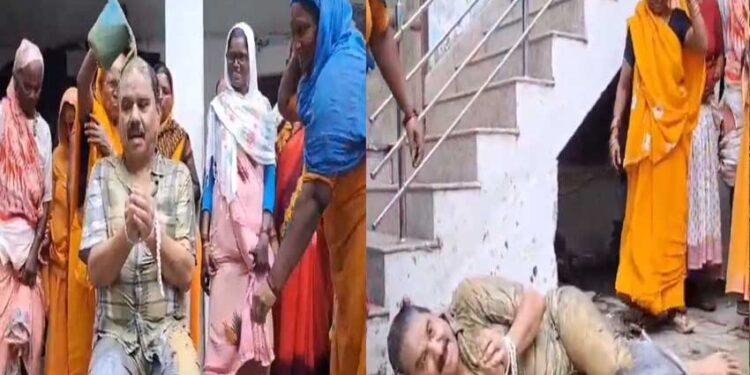Jatindranath Das (English: Jatindranath Das; born- 27 October, 1904, Calcutta, British India; died- 13 September, 1929, Lahore, Pakistan) was one of the famous revolutionaries of India, who sacrificed his life in jail for the freedom of the country and attained martyrdom. He is also known as ‘Jatin Das’, while his colleagues used to lovingly call him ‘Jatin Da’. Jatindranath Das was an assistant of Subhash Chandra Bose in ‘Congress Seva Dal’.
After meeting Bhagat Singh, he came to Agra to make bombs. The bombs that Bhagat Singh and Batukeshwar Dutt threw in the Central Assembly were made by him. As the revolutionaries were not treated like political prisoners in jail, they started a hunger strike on 13 July 1929. Jatindranath also joined it. He died in jail on the 63rd day of the hunger strike.
Amar Shaheed Jatindranath Das was born on 27 October 1904 in Calcutta (present Kolkata), British India in a simple Bengali family. His father’s name was Bankim Bihari Das and mother’s name was Suhasini Devi. Jatindra was nine years old when his mother passed away. At the age of 16, Jatindra passed the matriculation examination in 1920.
When Jatindranath was completing his further education, Mahatma Gandhi started the ‘Non-cooperation Movement’. Jatindra jumped into this movement. He was arrested while picketing at a foreign cloth shop. He was sentenced to 6 months. But when Gandhiji withdrew the movement after the Chauri-Chaura incident, a disappointed Jatindranath again joined college. This admission to college proved to be decisive in Jatindra’s life.[1]
Through a young man, Jatindranath came in contact with the famous revolutionary Sachindranath Sanyal and became a member of the revolutionary organization ‘Hindustan Republican Association’. Through his contacts and courageous actions, he gained an important position in the group and participated in many revolutionary activities. Meanwhile, Jatindra also learned to make bombs.
In 1925, Jatindranath was arrested in connection with the ‘Dakshineswar Bomb Case’ and ‘Kakori Case’, but due to lack of evidence, the trial could not be conducted and he was put under house arrest. When he went on a hunger strike for 21 days in protest against the mistreatment in jail, the government had to release him due to his deteriorating health.
After coming out of jail, Jatindranath Das continued his studies and politics. In the 1928 ‘Kolkata Congress’, he was Netaji Subhash Chandra Bose’s assistant in the ‘Congress Sevadal’. There he met Sardar Bhagat Singh and on his request came to Agra to make bombs. The bombs that Bhagat Singh and Batukeshwar Dutt threw in the Central Assembly on 8 April 1929 were made by him. On 14 June 1929, Jatindra was arrested and a trial was held against him in the ‘Lahore Conspiracy Case’.[1]
As the revolutionaries were not treated like political prisoners in the jail, they started a hunger strike on 13th July, 1929. Jatindra also joined it. He said that once the hunger strike starts, we will not break it without the fulfillment of our demands. After some time, the jail authorities started forcibly putting milk in the stomachs of the revolutionaries sitting on hunger strike by inserting a tube in their nose. Jatindra had the experience of fasting 21 days earlier. This trick did not work on him. He would pull out the tube inserted in his nose with his breath and hold it with his teeth. Finally, a doctor from the mental asylum inserted a tube in the other nostril after the tube in one nostril was pressed by his teeth, which went into Jatindra’s lungs. Without caring about his choking breath, that doctor filled a seer of milk in his lungs. This caused pneumonia. The staff tried to take him out by deceit, but Jatindra was not ready to separate from his comrades.
Jatindranath Das died on 13 September 1929, on the 63rd day of the fast. Jatindra’s brother Kiran Chandradas took his body to Kolkata by train. People paid tribute to this martyr at all stations. A crowd of lakhs had gathered at the time of cremation in Kolkata. Pandit Jawaharlal Nehru has mentioned this glorious non-violent martyrdom of his in his autobiography.[1]








